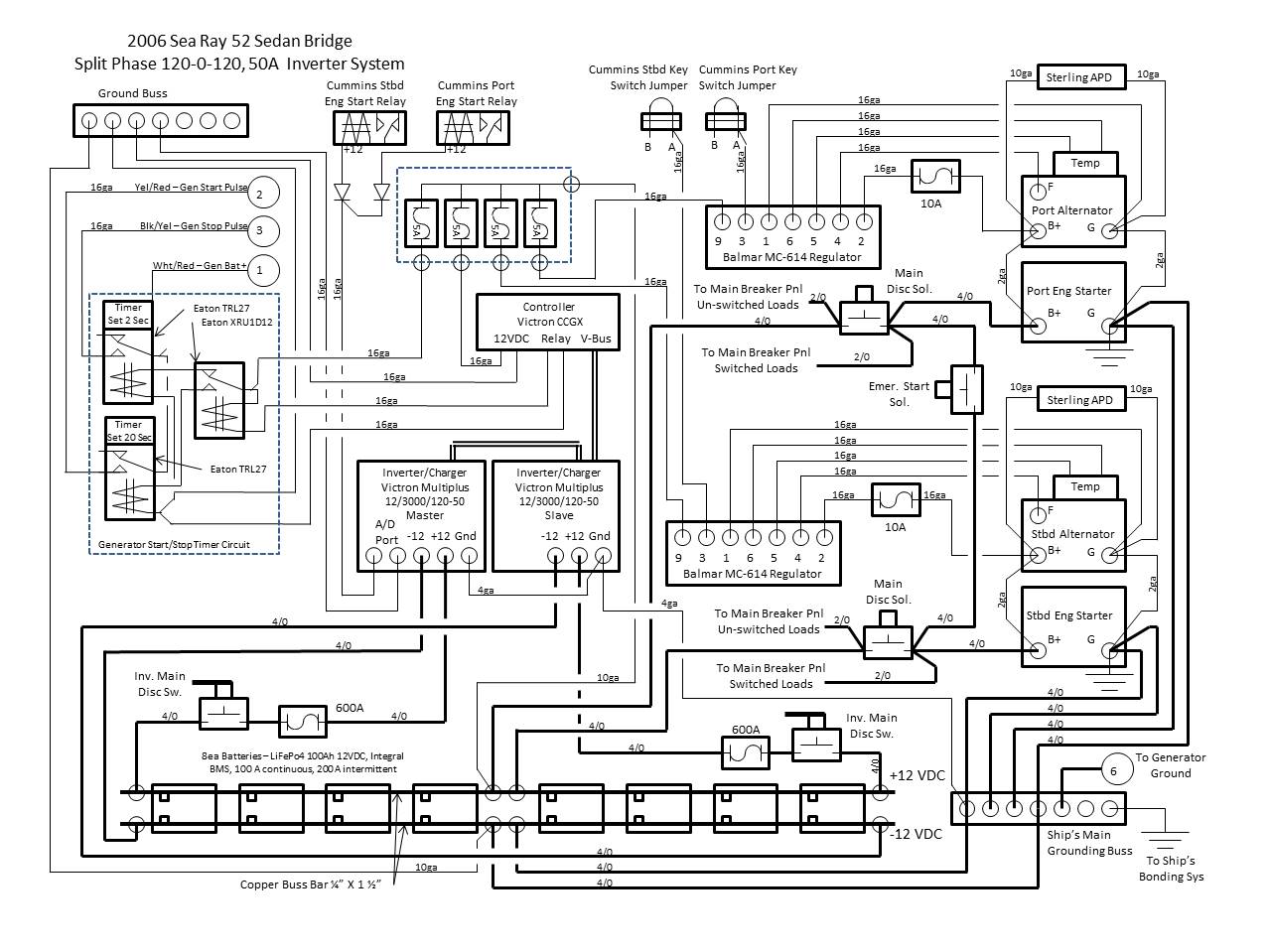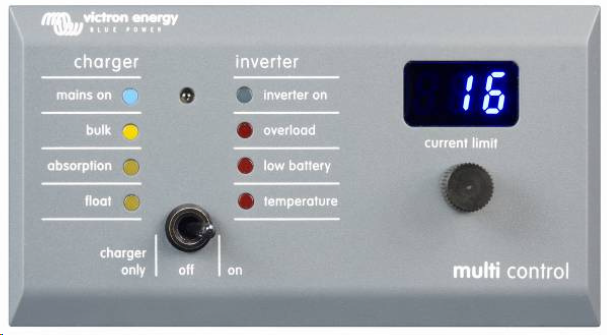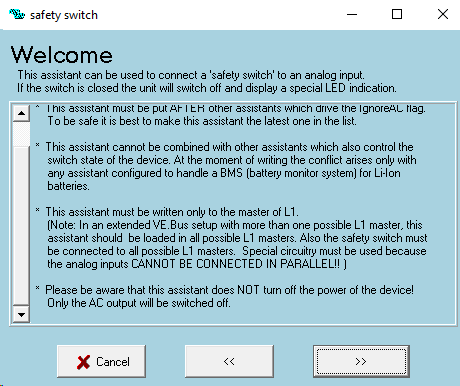We are in the process of adding two 12/3000/120-50 Multiplus inverters set up in a US split phase configuration (120-0-120) with a CCGX controller to our boat. The battery bank will be 8 each 100AH LiFePo4's with each having integrated BMS all in parallel. The boat's generator (14.7KW) and shore power will also be integrated as well as the engines' alternators. Each battery can tolerate 200 AMP current discharge for up to 30 seconds. We will be using this battery bank for engine cranking as well as for the House; engine cranking requires 1400CCA for up to 10 seconds for each engine.. During engine cranking it will be necessary to suspend any AC inverting the Multiplus' are performing. Can the analog/digital I/O port on the Multiplus be tied to the engine start solenoids to detect engine cranking and suspend inverting? If so how to configure? If not how can this be done autonomously ?
Thanks you for the help!



